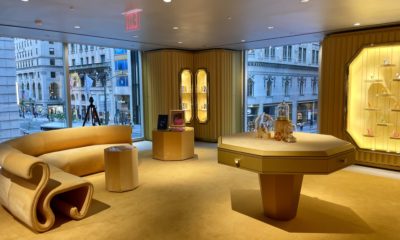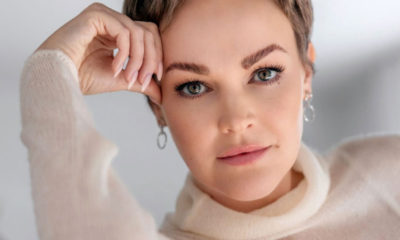Geoffrey Beene, the prominent fashion designer for four decades, died Tuesday at his home in New York. He was 77.
The cause was complications of pneumonia, said Russell Nardozza, vp of the company Geoffrey Beene.
Beene first approached household-name status in 1967, when he designed the high-necked princess-line dress that Lynda Bird Johnson — daughter of then-president Lyndon Johnson — wore at her wedding to Charles Robb. At that time, he had achieved some notoriety for his stiff, structured dresses with high waistlines.
In the 1970s, evidently stung by criticism that his dresses resembled “concrete,” he began to look for lighter ways to construct clothes. He became known for such shapes as the bolero and the streamlining jumpsuit.
He was born in 1927, in Haynesville, La., into a family of doctors, and — expected to follow in their footsteps — enrolled in the medical program at Tulane University.
“In the South,” he told Vogue in 1977, “if you’re not a doctor, lawyer, merchant or thief, everything else is a hobby. So the family thought I ought to be a doctor. The first two years weren’t bad, because it was classroom work, but the third year we got into vivisection, cadavers and all that horrendous stuff. And every disease we studied, I got.”
Advertisement
He dropped out of medical school and went to California, planning to attend the University of Southern California, but instead took a job in the display department at I. Magnin, where he became convinced that his future lay in fashion.
In 1947, he moved to New York to study at the Traphagen School of Fashion, and went on to Paris for training in sketching, designing and sewing. Returning to New York in 1951, he held a succession of jobs with Seventh Avenue houses. From 1954 to 1963, he designed for Teal Traina. In 1963, he became one of the first American designers to start his own company.
In 1974, he became one of the first American designers to have a secondary line of more casual, less-expensive clothes, which he called Beene Bag. Two years later, he was the first American designer to show his collection in Milan. Later, he showed in Paris, Brussels, Vienna and Beijing.
He developed a lucrative license with Van Heusen for men’s shirts, and another for men’s fragrances, including the popular Gray Flannel. He was less successful in creating a women’s scent, a failure he attributed to lack of money for heavy advertising and promotion.
In 1964, he won the first of eight Coty Fashion Critics Awards. He was the recipient of four awards from the Council of Fashion Designers of America, including one in 1998 for lifetime achievement. His clothes are in several museum collections.
He lived in his duplex apartment on the Upper East Side of Manhattan and in his weekend home in Oyster Bay, on Long Island, where he grew 2000 orchid plants in a three-wing greenhouse. He also had homes in Florida and Hawaii.
Advertisement
He is survived by his sister, Barbara Ann Wellman, of Conroe, Texas.

 Headlines2 weeks ago
Headlines2 weeks ago
 Headlines1 week ago
Headlines1 week ago
 Headlines2 weeks ago
Headlines2 weeks ago
 Headlines5 days ago
Headlines5 days ago
 Headlines1 week ago
Headlines1 week ago
 Eric Feigenbaum3 days ago
Eric Feigenbaum3 days ago
 Designer Dozen1 week ago
Designer Dozen1 week ago














